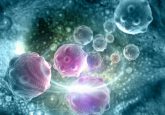Raman spectroscopy reveals difference between radiation-sensitive and resistant tumors

Researchers are conducting pilot clinical trials in head and neck cancer patients to determine whether Raman spectroscopy can be used to access tumor response to radiation and avoid inefficient radiation therapy, thereby sparing some patients of the toxic side effects.
“Identifying patients with radiation-resistant tumors prior to commencing treatment or immediately after it has begun would significantly improve response rates and help these patients avoid the toxic side effects of ineffective radiation therapy,” explained Narasimhan Rajaram, Assistant Professor at the University of Arkansas (AR, USA). “Our findings provide a rationale for translating these studies to patients with this as the ultimate goal.”
In the study, published in Cancer Research, Raman spectroscopy was utilized to map biomolecular changes in radiation-resistant and radiation-sensitive human lung tumors as well as two different types of head and neck tumors. It was discovered that radiation-sensitive tumors demonstrated greater changes in the expression of lipids and collagen, with the results consistent for all tumors types. Given these results, human clinical trials are now being conducted in partnership with the University of Arkansas for Medical Sciences (AR, USA).
These results follow a previous similar study in which auto-fluorescence imaging was used to identify differences between the metabolic response of radiation-resistant and radiation-sensitive lung cancer cells after exposure to radiation and YC-1, a common chemotherapy drug.
There are currently no accepted methods to determine treatment response before or during the early stage of radiation therapy meaning some patients undergo a full treatment regimen only to be identified later as non-responders. Results from this study, however, suggest that there could be clinical translation of Raman spectroscopy for patient stratification and guiding adaptation of radiotherapy during the course of treatment, meaning unnecessary treatments can be avoided in the future.
Sources: Paidi SK, Monterroso Diaz P, Dadgar S et al. Label-free Raman spectroscopy reveals signatures of radiation resistance in the tumor microenvironment. Cancer Res. doi: 10.1158/0008-5472.CAN-18-2732 (2019) (Epub ahead of print); www.eurekalert.org/pub_releases/2019-03/uoa-itf031119.php



